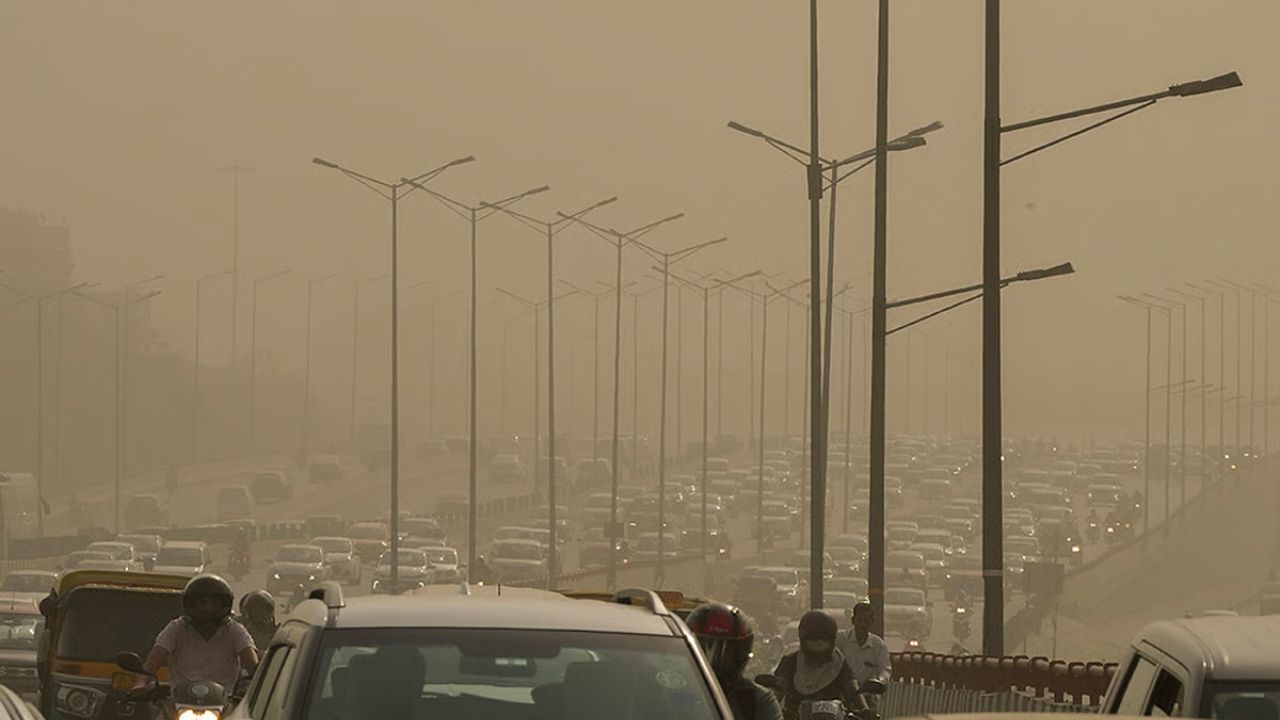The standout trend of fashion month, along with the least impressive one.
The Miu Miu show on the final day of fashion month kicked off with a striking art installation—just weeks before Art Basel Paris begins—featuring a piece by Polish-born, London-based artist Goshka Macuga. Titled “Salt Looks Like

The Miu Miu show on the final day of fashion month kicked off with a striking art installation—just weeks before Art Basel Paris begins—featuring a piece by Polish-born, London-based artist Goshka Macuga.
Titled “Salt Looks Like Sugar,” the installation transformed the runway into a newspaper printing plant, showcasing issues of a tabloid called The Truthless Times hanging from conveyor belts suspended from the ceiling. Videos of two employees played on the walls, all serving to highlight the ambiguity of what one article described as a “post-truth era” and prompting questions like: What constitutes fact? What is fiction? What does fashion mean in this context?
(Although, to clarify, the last question wasn’t part of the installation—but it certainly could have been.)
The ongoing inquiry into what the future of style might look like is a recurring theme in many collections. This season, however, there seemed to be a lack of clear answers, with designers frequently turning to the past and indulging in nostalgia while spinning in place. Big shows featuring big celebrities signified … not much.
This uncertainty is particularly evident for a brand like Chanel, which is currently without an artistic director and relying on its design team for direction. The brand’s aesthetic remains anchored in familiarity, showcasing classic elements like the iconic bouclé skirt suits and flowing floral chiffons.
This was especially highlighted by a memorable performance from house ambassador Riley Keough, who entertained the audience with a rendition of “When Doves Cry,” while suspended in a giant birdcage—an homage to Vanessa Paradis’ famous 1991 Chanel ad. But when the future remains unclear, predicting how to dress can be equally challenging.
This backdrop makes it intriguing to see Miuccia Prada at Miu Miu and Nicolas Ghesquière of Louis Vuitton arrive at similar solutions as fashion month wrapped up: Don’t stress about the confusion; instead, embrace it. Transform the chaos into a fashion statement.
While their actual designs differed, the underlying principles resonated. As Prada noted after her show, the goal was to merge various realities (or surrealities). She explored the tension in women’s lives—the balance between substance and frivolity, responsibility and dreams, sex and maternity, strength, and vulnerability—becoming the creative essence of Miu Miu.
This season’s collection juxtaposed elements of athletic wear, such as cutout maillots and nylon track jackets, with delicate white cotton pieces resembling midcentury Provençal nightgowns. These were adorned with sparkling ’70s graphics and floral prints. Other standout pieces included multiple bejeweled Western belts draped over what looked like sanitized nurse uniforms.
Additionally, there were bras styled with hanging straps to create a ruffled effect over knit sweaters that hugged the torso like bustiers (a styling trick likely to catch on), and tight polo shirts paired with full skirts. Some dresses featured open backs, left intentionally undone as a statement: if no one is around to button you up, who cares? This could be Prada’s motto: “Why not?”
Hilary Swank in a brown leather skirt suit and Willem Dafoe in a blue overcoat surprised the audience as they walked the runway. Prada’s intention was not to resolve these dichotomies but to exploit them. Similarly, Ghesquière’s blend of structure and softness, along with Renaissance volumes and modern athleisure, continued his signature time-traveling aesthetic at Louis Vuitton while celebrating oxymorons—embracing “terrible beauty.”
The collection featured numerous breeches and bloomers in velvet and pleated chiffon beneath extravagant ’80s power shirts, with layered necklaces draped over almost everything. The overall vibe was a mix of opulence and casual mall wear, with some shoes adorned with fabric petals resembling oversized floral mops.
In addition to bloomers, fuzzy “life-raft” shoes emerged as one of the season’s more eccentric trends—also seen in Chitose Abe’s masterful deconstruction of French archetypes at Sacai, manifested as shaggy, feathery slippers. Yet, the most baffling fashion phenomenon was the one-leg pant, first introduced in Milan just over a week ago. Ghesquière showcased these as well, pairing them with funnel-shaped flying saucer tunics. The pants appeared as though they had snagged on a hook during a hasty departure, resulting in half of them being torn off.
The embrace of seemingly nonsensical combinations, confidently worn, emerged as the standout idea of the month—a takeaway you can easily replicate at home, regardless of whether you ever don any of these garments. However, the one-leg pant might just be a step too far.




